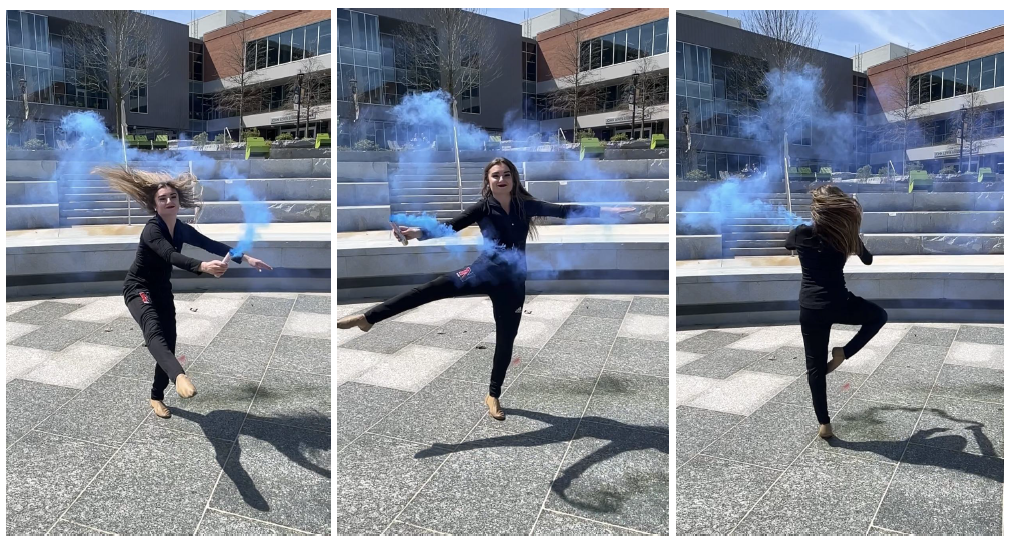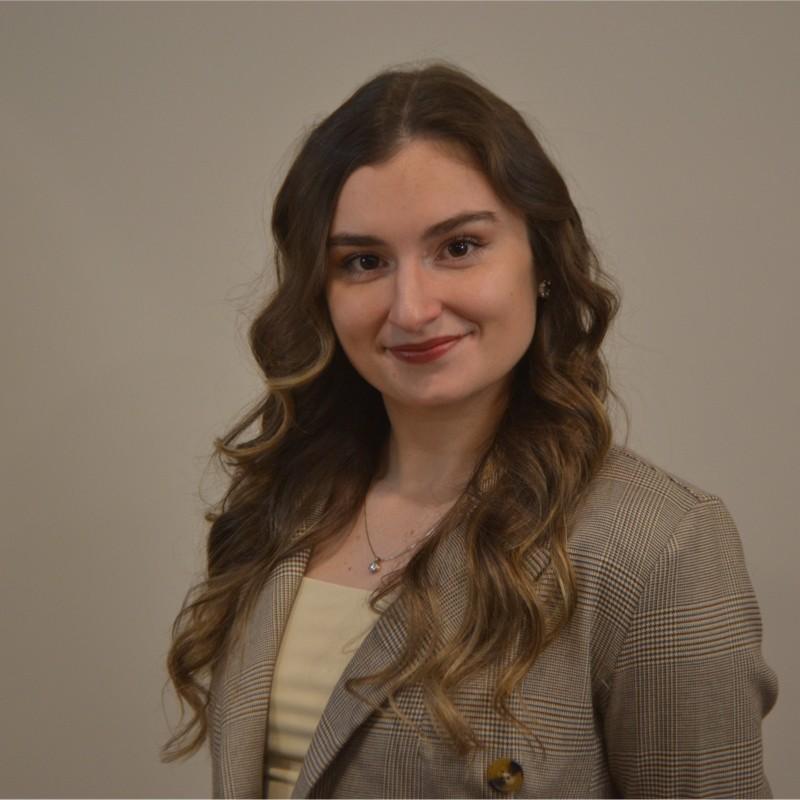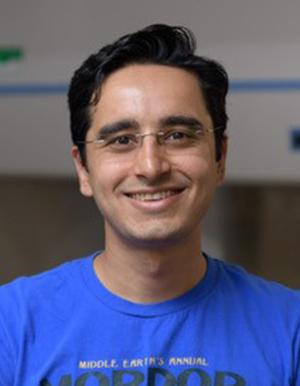
Grad student Alisyn Bourque holds smoke while turning in a study involving the fluid dynamics of dance
Bioengineering PhD student Alisyn Bourque, who is passionate about bridging the arts and sciences, employed her extensive background in dance in a final class project to study the fluid dynamics of dancers turning.
“Professional dancers train for many years to perfect certain turns and be able to turn consecutively many times in a row,” said Bourque, who began dancing at age four. “There is not much information in the literature on the fluid dynamics of dancers, so I proposed to study the fluid dynamics of dancers turning. This is in the context of professional ballet dancers on stage in air as well as modeled in water.”
This project was conducted for the ChBE 6200 Advanced Transport Phenomena taught by Saad Bhamla, associate professor in Georgia Tech’s School of Chemical and Biomolecular Engineering.
"Fluid dynamics is one of the most challenging courses chemical engineering students have to take, right up there with Thermodynamics," Bhamla said. "To enhance learning outcomes and connect advanced fluid concepts with everyday life, I encourage graduate students to explore projects that bridge fluids with their interests."
Bourque’s aim was to understand and model how the drag of air and water affects certain turning dance moves, and why dancers turn in certain positions.

Alisyn Bourque
Examining Ballet Move
She specifically examined a classical turn in ballet called a fouetté, a turning motion where the leg first sweeps horizontally through the air and then cuts into a pirouette (the foot touching the knee).
“Professional ballerinas en pointe are able to perform 32 fouetté turns consecutively in the famous ballet Swan Lake,” Bourque said. “This amazing feat has incredible fluid dynamics involved, as their limbs are propelled through the fluid around them.”
By analyzing velocity profiles, shear stress, and torque, Bourque aimed to decipher the fluid dynamics governing the fouetté.
Video Analysis and Simulations
To visualize the fluid flow around a turning dancer, Bourque took slow-motion videos captured amidst colored smoke. These videos provided initial insights into how the dancer's movements interact with the surrounding air. In addition, she conducted computational fluid dynamics (CFD) simulations using a CAD model of a dancer using SimScale software, allowing for a more detailed analysis of fluid behavior.
From the velocity profiles to the distribution of shear stress, Bourque observed distinct patterns that influence the dancer's ability to execute turns. Notably, the torque values calculated through hand calculations and CFD simulations differed significantly, highlighting the complexity of the fluid dynamics involved.
Combining Arts and Engineering
“This project provides a practical, real-world example of an application of fluid dynamics analysis, and allows for comparison of hand calculations learned in class to computational abilities,” Bourque said. “A good understanding of the interaction between a fluid and a dancer’s body as the dancer turns was gained through this work, and it combined the fields of art and science.”
Bourque said this type of fluid analysis could be performed on many other types of turns and dance moves to understand their fluid-body interactions, including synchronized swimming.

Prof. Saad Bhamla
“I’d like to thank Dr. Bhamla for this class and for allowing students to think outside the box and apply fluid dynamics analysis to other fields they are passionate about,” Bourque said.
Bhamla added: "This method deepens understanding and enables students to recognize fluid dynamics in everyday life—from how they stir their coffee to, in Alisyn’s case, dance movements."
“Dance fuels who I am, and it allows me to let go and be myself. It gives me a deeper purpose and brings a happiness I can’t experience anywhere else,” she said.
As an undergrad at Northeastern University, Bourque was on the Northeastern University Dance Team (performing at the basketball games) and Kinematix Dance Troupe which was a premier hip hop dance troupe in Boston.
Trained in a widevariety of dance styles (ballet, pointe, jazz, tap, lyrical, contemporary, modern, hip hop), she is currently a finalist for the Atlanta Falcons Cheerleaders.
"Even though I am pursuing my career in Bioengineering, I refuse to stop dancing and have continued to keep it in my life," she said.